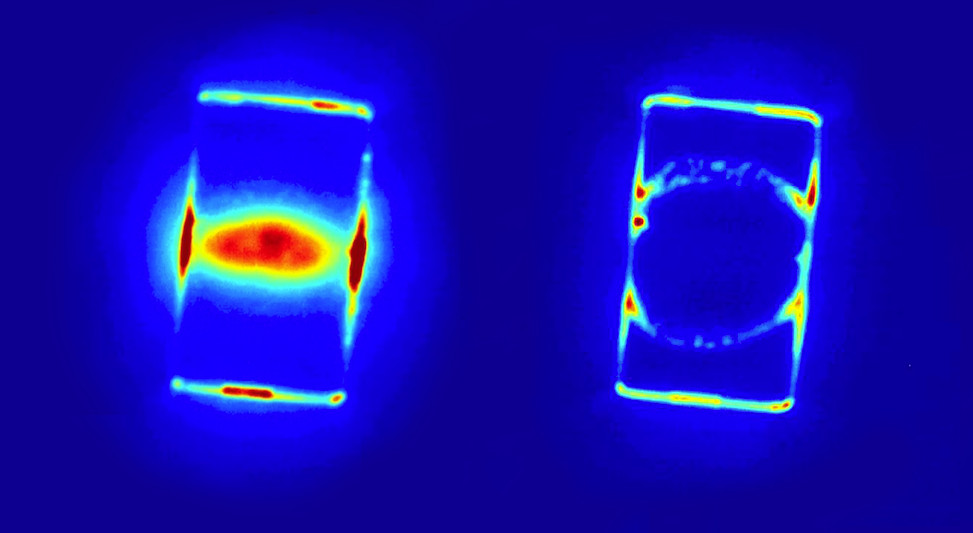
Sciences & Technology
How energy is hidden in colours

Researchers in Australia have resolved a fundamental design challenge in next-generation perovskite solar cells, bringing their widespread use a step closer
Published 29 October 2020
Hidden inside the structure of meteorites may be the inspiration for our renewable energy needs.
Known as perovskite, the mineral is also found in volcanic and other rock types on Earth. It was first discovered in the Ural mountains of Russia by Gustav Rose in 1839 and named after Russian mineralogist L. A. Perovski.

Today, a perovskite is any material with a crystal structure similar to the mineral called perovskite, but most are artificially synthesised in laboratories.
Many scientists and engineers working in solar energy are focused on perovskite materials because their crystal structure can serve as a semiconductor for passing current as well as absorbing visible light.
In the 21st century, perovskites have shown great potential in several important applications, including as LEDs (light-emitting diodes), fast x-ray imaging machines, lasers. They also have applications in photoelectrolysis – the process of using light to split water – which could have an important role to play in producing low- or zero-emission hydrogen for energy generation and, consequently, green heavy industry and manufacturing.
But perhaps the most excitement surrounds the potential for perovskites to complement or, in some cases, replace silicon as a key component in the conversion of light into electricity, a field known as photovoltaics.
Silicon has enabled individual homeowners, businesses and energy companies to install solar panels at increasingly large scale over recent decades, but the material also faces some drawbacks.
The creation of silicon solar cells requires significant amounts of energy, often generated by burning fossil fuels, and are fundamentally limited in efficiency when converting sunlight into energy.
At the end of their lifespan, silicon solar cells are also expensive to recycle.

That’s where perovskites come in.
Unlike silicon, perovskite materials are easy and cheap to create, both in terms of time and cost. They’re also more flexible than silicon, and in some instances can be printed onto a base material, not unlike the way ink is printed onto paper.

Sciences & Technology
How energy is hidden in colours
Perovskites have also demonstrated comparable efficiency to silicon. They’re also customisable, meaning they can be ‘tuned’ to harness parts of the light spectrum that silicon is unable to capture.
Their properties raise the prospect of tandem solar cells – devices containing both silicon and perovskites – being commercially deployed, offering significant increases in efficiency and productivity compared to existing solar cells.
However, there are a number of challenges preventing all of this exciting potential from being realised.
One of these problems is a phenomenon known as light-induced phase segregation, where sunlight disrupts the initially uniform arrangement of halide ions (a halogen atom with a negative charge like bromide and iodide) within perovskites.
This leads to instability in the perovskite’s bandgap, the energy gap between the occupied and empty energy levels, affecting which part of the solar spectrum can be absorbed. These changes occur unevenly across the perovskite, which slows the movement of electrons through the material and reduces the efficiency of devices.

A solar cell that doesn’t function properly in sunlight isn’t much use to anyone, so scientists have been working hard to clear up this annoying flaw in the otherwise promising future of solar photovoltaics.
And now, an effective – albeit ironic – solution has been identified.

Sciences & Technology
The nanowires building greener nanodevices
With our colleagues at the ARC Centre of Excellence in Exciton Science, we have shown that increasing the intensity of light beyond the range that a rooftop solar cell would typically experience, will undo the disorder introduced at lower light intensities, and that this approach can be used to control the material’s bandgap.
This mechanism was noticed unexpectedly during a recent investigation and required complex computational modelling to understand before the findings could be shared.
Many of the previous efforts to resolve this phase segregation involved changing the type of material, its composition, or its dimensions, with the decisive role of light intensity going unnoticed until now.
The phenomenon can be thought of as a dimmer switch telling the bromide and iodide what to do. Turning the control knob up to a super-bright level will force the disordered elements back into a controlled pattern.
To achieve this in a real-world setting, a tool such as a solar concentrator – which uses focused sunlight to increase the sun’s power – would be required.
The results, which have been published in the journal Nature Materials, are expected to prompt widespread further investigation from research groups around the world into the potential of this new approach.

Perhaps the most important implication is the fact that the best combination and arrangement of elements in the material can be retained to achieve high efficiency and control, with no external treatment or chemical ‘doping’ of the material necessary.
But it’s not only the field of solar power that stands to benefit. Using light to rapidly change a semiconductor material’s bandgap has other practical applications, including data storage.
The future looks promising for perovskites, and it just needed a little more light to show us the way.
Banner: Shutterstock